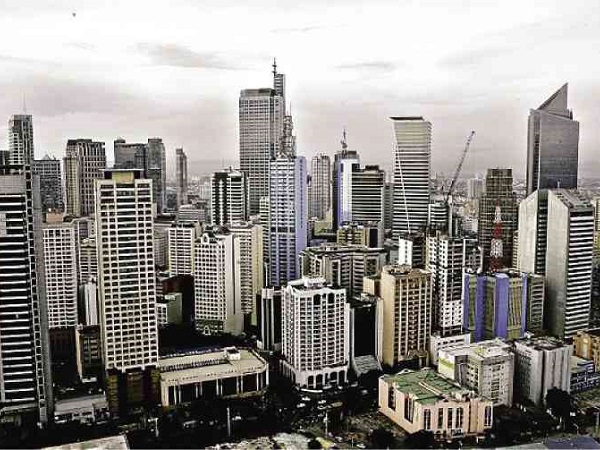PH economy expected to improve in ’14

The Makati CBD. Southeast Asia’s five major economies—Indonesia, Malaysia, the Philippines, Thailand and Singapore—this year are expected to grow collectively by 5.1 percent, slightly better than the projected growth of 5 percent in 2013. INQUIRER FILE PHOTO
Growth in Southeast Asia’s major economies is expected to improve this year as the economies of more advanced nations start to recover, lifting demand for the region’s exports.
According to the International Monetary Fund (IMF), Southeast Asian countries like the Philippines, as well as other emerging markets, are still at risk from the reversal of capital flows as investors take their money back to advanced economies.
“Many other emerging market and developing economies have started to benefit from stronger external demand in advanced economies and China,” the IMF said this week in an update to its World Economic Outlook (WEO) report.
Southeast Asia’s five major economies—Indonesia, Malaysia, the Philippines, Thailand and Singapore—this year are expected to grow collectively by 5.1 percent, slightly better than the projected growth of 5 percent in 2013.
The 2014 outlook for the entire region is slower than the previous forecast of 5.4 percent.
The region’s projected growth matches the forecast for all emerging markets, the IMF report showed.
By 2015, growth in the so-called Association of Southeast Asian Nations-5 (Asean-5) is seen to improve to 5.6 percent, or better than the 5.4 percent projected for emerging markets as a whole.
Growth in the emerging world may continue to outpace the expansion of the global economy, which is seen at 3.7 percent in 2014 and 3.9 percent in 2015. Advanced economies are projected to grow by 2.2 and 2.3 percent, respectively, in the same period.
Despite the improved outlook on advanced economies, emerging markets still have to deal with several risks, particularly capital flow volatility, brought on by the US Federal Reserve’s monetary policy direction.
The Federal Reserve for the first time in five years reduced its monthly asset purchases, originally set at $85 billion, by $10 billion as the US economy showed more signs of recovery.
“Responses to the news have been relatively muted in most economies. Nevertheless, the combination of portfolio shifts and domestic weaknesses could result in sharper capital outflows and exchange rate adjustments,” the Fund said.
“Exchange rates should be allowed to depreciate in response to deteriorating external funding conditions.”
Weaker currencies in emerging markets mean that governments will have to borrow less from creditors abroad to fund domestic expenses.














